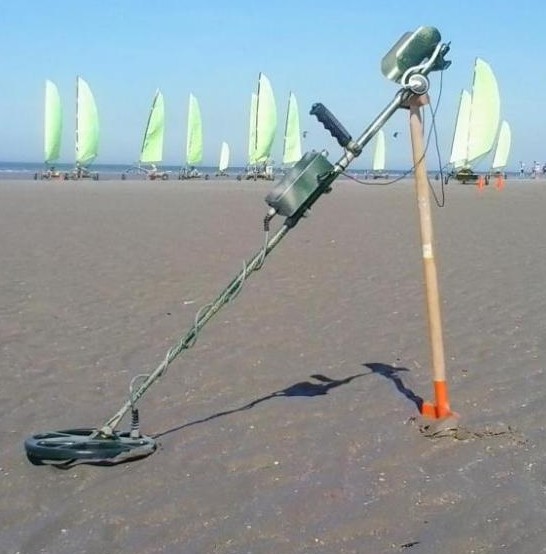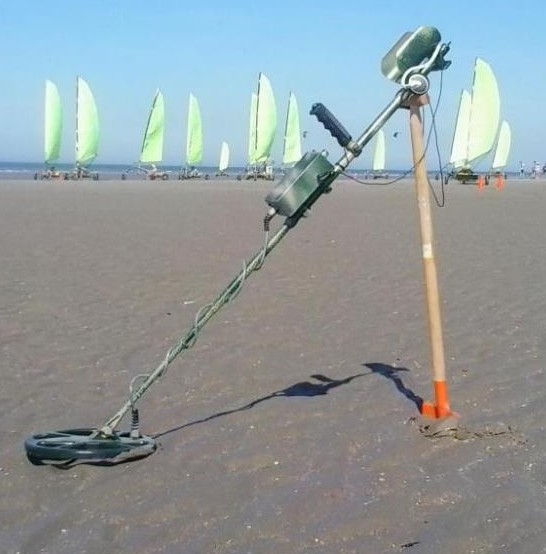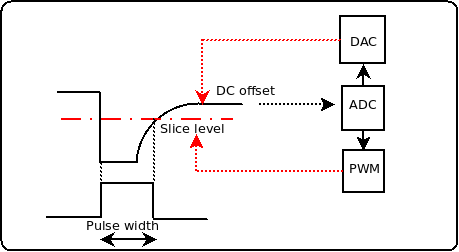


|
Introduction |

|

The major advantage of the Pickini V1 and V2 design over the V3 version is the fact that the former 2 have a stabilized 12V power supply, while the V3 is powered directly from the raw battery supply. When the V3 version is powered on, there is a calibration cycle that will set up the internal slicing level to measure the pulse width. As power supply of the battery gradually drops, the internal setup gets less efficient, reducing the overall sensitivity of the V3 detector.
That is why I decided to redesign the V3 completely, including an automated setup for both the DC level of the amplified flyback pulse and the DC slicing level of the internal comparator. This requires 2 adjustable voltages: one is the DAC output of the PIC controller and the other is a filtered PWM output with high resolution.
The Pickini design is a Pulse Induction detector based on temporal sampling. This principle is described in the book "Inside the metal detector" on page 170 = PI design 5. Unlike voltage sampling, the width of the flyback pulse is measured. It has the same pitfalls as the voltage sampled detector, but then in the time domain: the closer we slice the flyback puls to the steady state return value, the more sensitive the device will be. The major problem with this is, when sampled too close or higher than the steady state voltage, the detector will become instable. The same rule is valid for the voltage sampled detector: the closer the sample is taken after the flyback pulse, the more sensitive. When the sample is however taken too soon, the flyback voltage is still in the transient slope and readings will become unstable.
With Pickini V4, both the DC offset of the amplifying opamp and the DC slicing level are tuned to each other. The result is a very sensitive detector that is calibrated taking into account the battery raw power supply and coil differences.
This calibration is done only once at startup, and takes about 20 seconds. When searching for an extended period of time, it is useful to repeat this sequence by switching the detector off and back on again. This will guarantee optimal sensitivity when the battery voltage starts to drop.

Other features that were already in V1-V3: